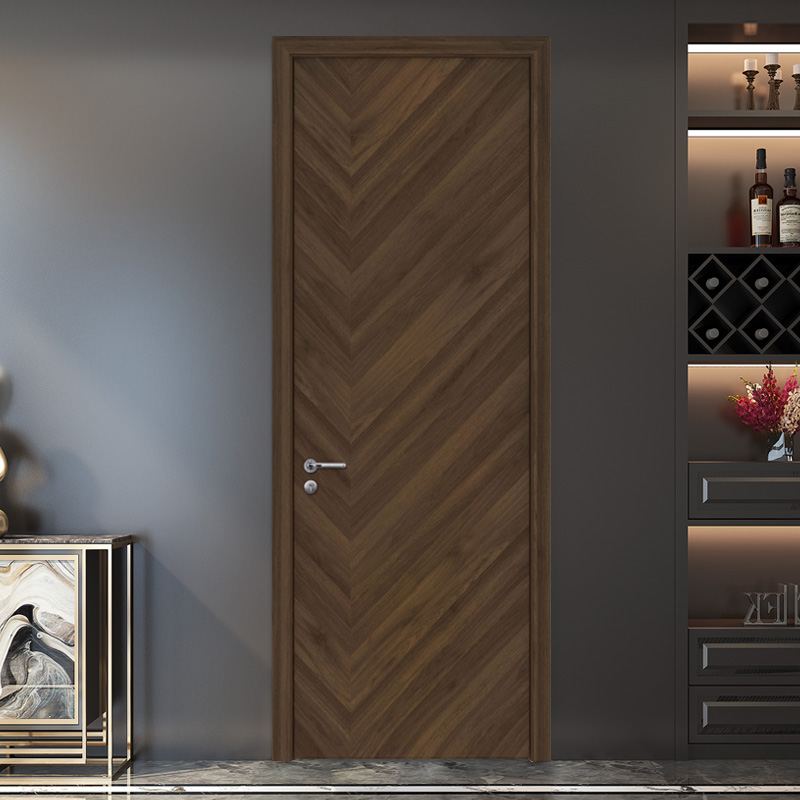Product Consultation
Your email address will not be published. Required fields are marked *

How does the surface finish of the Melamine Laminated Wooden Door resist scratches, stains?
Apr 22,2025
How does a Glass Wooden Door contribute to the overall energy efficiency of a building?
Apr 14,2025
How resistant is the PVC coating on a PVC MDF door to scratches, stains, and fading over time?
Apr 07,2025
Veneer Layer Protection: The veneer layer of a painting door is composed of a thin slice of natural wood adhered to the surface of a core material. While natural wood is inherently porous and can absorb moisture, modern manufacturing techniques ensure that veneer layers are treated and finished to enhance their durability. High-quality finishes or sealants, such as polyurethane or varnish, are typically applied to the veneer, creating a protective barrier that significantly reduces the permeability of the wood. This protective layer prevents water from penetrating the veneer, thereby minimizing the risks of warping, swelling, or peeling. The longevity and effectiveness of the veneer’s moisture resistance depend largely on the quality of the sealant and the thoroughness of its application.
Core Material Stability: The core material of a veneer painting door plays a crucial role in determining its overall resistance to moisture and humidity. Common core materials include MDF (medium-density fiberboard) and other engineered wood products, which are known for their dimensional stability. Unlike solid wood, which can expand and contract significantly with fluctuations in humidity, MDF and engineered wood are designed to resist such changes, providing a more stable structure. However, it is important to note that these materials are still vulnerable to prolonged exposure to high levels of moisture. If the core material becomes saturated, it can lead to swelling, deformation, and a breakdown of the structural integrity of the door. Therefore, ensuring that the veneer and core are properly sealed is essential for maintaining the door's durability in humid environments.
Impact of Environmental Conditions: The performance of veneer painting doors in moist or humid environments is heavily influenced by the conditions in which they are installed. Areas such as bathrooms, kitchens, or basements, where moisture levels are typically higher, pose a greater challenge to the longevity of these doors. In such settings, it is imperative to ensure that the doors are equipped with a robust finish that can withstand frequent exposure to moisture. Regular maintenance, including inspection and reapplication of sealants or paints, is necessary to preserve the door’s protective coating and prevent moisture ingress. This proactive approach helps to extend the lifespan of veneer painting doors and maintain their aesthetic appeal even in challenging environments.
Importance of Proper Ventilation: Effective ventilation is a critical factor in mitigating the effects of moisture and humidity on veneer painting doors. Inadequate ventilation can lead to the accumulation of moisture in the air, which in turn can compromise the integrity of the door over time. To reduce the risk of damage, it is advisable to ensure that the areas where veneer doors are installed are well-ventilated, allowing for proper air circulation. This is particularly important in spaces prone to high humidity, such as bathrooms and kitchens. The use of exhaust fans or dehumidifiers can further help to manage humidity levels, thereby protecting the doors from potential moisture-related issues. Implementing these measures not only enhances the durability of veneer painting doors but also contributes to a healthier indoor environment.
GA-35 Black Sandel Wood Veneer Interior Semi-Solid Woodend Door

Your email address will not be published. Required fields are marked *










